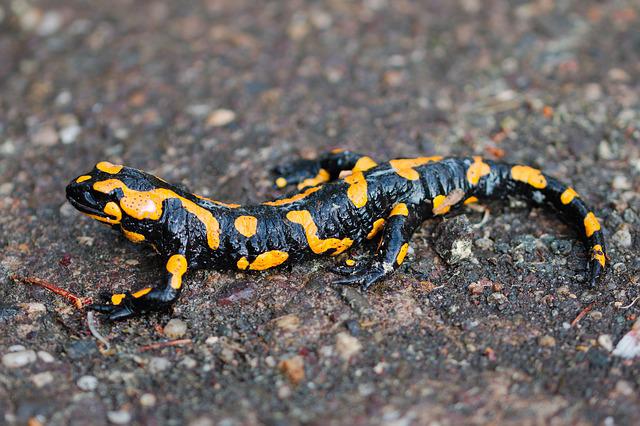Salamanders make interesting pets. They are relatively easy to care for and can be fun to watch. If you are thinking about keeping a salamander as a pet, there are some things you need to know first. In this article, we will discuss the requirements for keeping a salamander as a pet, as well as some of the pros and cons of doing so.
The first is the tank.
What sizes of tanks for the number of salamanders do you want to keep?
A salamander needs a tank that is at least ten gallons. For every additional salamander, you will need an extra five gallons of space. So, if you want to keep two salamanders, you will need a tank that is at least fifteen gallons. The tank should also have a tight-fitting lid, as salamanders are good climbers and may escape if given the chance.
Substrate
Another important consideration is the substrate. Salamanders need a substrate that will hold moisture, as they require a humid environment to thrive. A coco fiber substrate or sphagnum moss is a good option. The substrate should be at least four inches deep to give the salamanders enough space to burrow.
Suitable substrates for a salamander and the pros and cons of each:
- -Coco fiber substrate: This is a good option because it holds moisture well. The downside is that it can be difficult to clean.
- -Sphagnum moss: This is also a good option for holding moisture. It is easier to clean than coco fiber, but it may need to be replaced more often.
- -Sand: Sand can hold moisture, but it is more difficult to clean and may not hold moisture as well as other substrates.
Hiding places
After you have decided on a substrate, you will need to add some hiding places for your salamander. Hiding places can be made of bark, rocks, or plastic plants. Be sure to add several hiding places, as salamanders like to have options.
Decor
The next thing you will need to consider is the decor. Salamanders are not very active, so they do not need a lot of decorations in their tank. A few pieces of driftwood or live plants will suffice. Just be sure that any decorations you choose are safe for salamanders and will not damage their delicate skin.
What types of live plants are safe for salamanders?
Some safe options include ferns, mosses, and ivy. Avoid using plants with sharp leaves, as they can damage the salamander’s skin.
Are fake plants acceptable?
Fake plants are okay to use, but be sure to choose ones made of soft material. Avoid using plastic plants with sharp edges.
Lighting
Salamanders do not need special lighting, but they do need a temperature gradient in their tank. This can be achieved by placing the tank in an area that gets indirect sunlight or by using a basking lamp. The basking lamp should be placed on one side of the tank so that the salamanders can move to a warmer or cooler area as needed.
Heating
As we mentioned, salamanders need a temperature gradient in their tank. The cool end of the tank should be between 60 and 70 degrees Fahrenheit, while the warm end should be between 80 and 85 degrees Fahrenheit. This can be achieved with a basking lamp or by using a ceramic heat emitter.
Ceramic heat emitters are a good option because they do not produce light, which can disturb the salamanders’ sleep cycle. Be sure to use a thermostat to regulate the temperature.
Water
All salamanders need a water bowl in their tank. The bowl should be large enough for the salamanders to soak in if they choose, but it should not be so deep that they can drown. Be sure to change the water regularly and clean the bowl with a reptile-safe cleaner.
Feeding
Now that you have everything set up, you will need to start thinking about food. Salamanders are carnivores and eat small insects. Crickets, mealworms, and earthworms are all good options. The size of the insect should be no larger than the width of the salamander’s head.
You can offer live food or pre-killed food. If you offer live food, be sure to remove any uneaten insects so they do not bother the salamanders.
Pre-killed food can be offered in a dish or on a feeding tong. Be sure to remove any uneaten food so it does not rot and contaminate the tank.
How often should the tank water be changed?
The tank water should be changed every two weeks. Be sure to remove all the decorations and substrates before cleaning the tank. When adding new water use a de-chlorinator this is essential if you use tap water.
The alternative is to use bottled spring water.
This should be done gradually so your salamander can adjust to the new water.
How often should you feed your salamanders?
A good rule of thumb is to offer food once a day. If your salamander is not eating every day, you can reduce the frequency. Just be sure to monitor their weight so you don’t accidentally starve them.
What should I do if my salamander stops eating?
If your salamander stops eating, the first thing you should do is check its tank. Make sure the temperature is correct and that there is fresh, clean water available. If everything looks good, then it is probably just a normal part of their molting process. Salamanders typically stop eating for a week or two while they shed their skin.
If your salamander is not molting, then you should take them to the vet to rule out any health problems.
Conclusion
As long as you provide a good home and care for your salamander, they can make great pets! They are relatively low-maintenance, and they are fascinating to watch. Just be sure to do your research before bringing one home.




